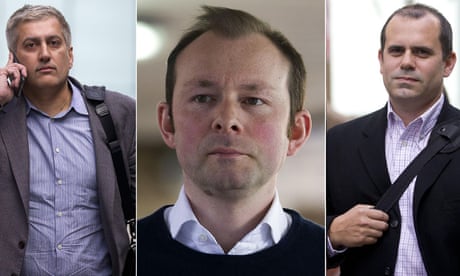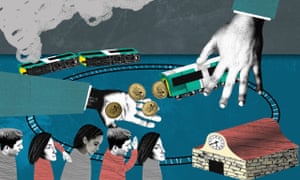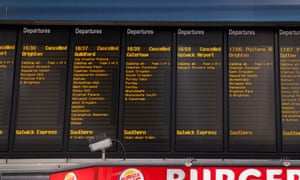LIAM CROMAR in Cricinfo
If the paying public isn't to feel short-changed, administrators need to consider effective ways of disciplining teams
It's easy to dismiss complaints about slow over rates as the grumblings of a few non-representative malcontents. It's probably also true that many spectators are not bothered - at least not beyond brief shoulder-shrugging. Corruption, dead pitches, and (mis-) governance are certainly more pressing issues. Yet that isn't to say it's not a problem that shouldn't be fixed.
The way Tests are marketed works against spectators realising their loss. One is encouraged to buy a ticket for a day, not for the minimum number of overs scheduled for the day. The overs lost are almost imperceptible, unless one is keeping an eye on the progress. Even when overs are lost, the percentage of cricket reduced seems trivial. Three overs out of 90, the number that England failed to bowl on the first day at Lord's against Pakistan, is a mere 3.33%. Much ado about nothing?
A moment's consideration will, however, reveal the unacceptability of such short-changing. Would, for example, all in attendance at a football match be content if the players downed tools after 87 minutes? Would cinema-goers put up with the last four minutes of a two-hour film being chopped off? Would the audience applaud were an orchestra to pack up without playing the last few bars of the symphony?
Officially, 90 overs is a minimum, albeit more of a theoretical, aspirational minimum than a literal minimum. That it is well within the realms of possibility is highlighted by the fact that not only do recreational cricketers regularly fit 90 overs into an afternoon but also that it isn't completely unheard of for international teams to meet the target.
Six hours of 15 overs each should therefore not be viewed as too taxing, even without making use of the extra half-hour, which is supposedly a reserve, only to be used if needed. Unfortunately, it now appears that the extra time is viewed as an entitlement rather than an option to be used only in extremis. To run past the official close time may be regarded as a misfortune; to fail to complete the overs in the extra time should be regarded as carelessness.
Worse, it smacks of discourtesy. In much the same way that certain tins of chocolates appear to have quietly scaled down over the years, over rates are another example of almost invisible under-provision: the amount paid for the product stays the same, but less of the product is handed over.
To put some figures on this, take the example of England's 87 for 90 at Lord's. A top-price ticket cost £90, meaning one over held a value of £1. Therefore a ticket holder would have failed to see anything for three of the pounds that he or she handed over. Three pounds may not seem like a great deal, but it's not nothing. Not everyone at Lord's is a London high-flyer awash with cash.
Would all in attendance at a football match be content if the players downed tools after 87 minutes?
Now bear in mind 29,000 were at Lord's that day. Not all would have paid £90 - some tickets were down at £60, while some will have enjoyed hospitality in private boxes - so for purposes of argument, assume that the average ticket cost was £75, meaning the average "loss" would have equated to £2.50.
Naturally, no refund was offered; none is given if even a mere 25 overs have been bowled, 27.78% of the supposed minimum, yet again highlighting the flexible nature of the word "minimum". Twenty-nine thousand multiplied by £2.50 yields a collective loss of £72,500.
So much for the financial element. However, more is at stake. On the last ball of the 87th over, Pakistan had lost their sixth wicket. Three further overs, including one from the on-song Chris Woakes, would have been engrossing watching. Of course, it's not entirely correct to imagine the hypothetical overs as being added on to the end of the day; still, the more overs bowled during the day, the more chance of action for the spectators.
It would be impractical to force players to complete the overs regardless of conditions - playing in darkness would unfairly penalise the batting side - but if players are not going to be required to complete the scheduled overs even when conditions are suitable, then an effective way of policing it needs to be found, one that stands a chance of benefiting paying viewers.
The current system of policing over rates via the threats of forfeiting match fees, or in extreme cases, banning captains, leaves much to be desired. Suspending captains, while obviously more likely to concentrate the minds of the players, is liable to be gamed. During the World T20 in 2012, when Mahela Jayawardene was in danger of incurring a suspension, Kumar Sangakkara was named as the official captain against England. Yet it quickly became apparent that Jayawardene was still in command on the field.
Furthermore, suspending the captain perversely punishes the spectators at the next game, depriving them of seeing one of the team's best players, a point that has been made before. As far as match-fee fines go, while the threat of losing 20% of a £12,000 fee might be a significant restraint for mortals, it's hard to see how it would be anything but water off an England captain's back (water down the back being a common experience in that climate), and does nothing to compensate the ticket holders. In-game penalties, with immediate application, are the way forward.
It is curious that in England the form of the game that least suffers from running slightly overtime - T20 - is the one where teams incur the heaviest immediate penalty: six runs if the 20th over has not commenced after 75 minutes. This is despite the fact that, arguably, neither the batting side nor the spectators miss out. All the necessary overs will still be bowled. If only 114 balls are delivered before the 75-minute cut-off, rather than the required 115, the net effect is only to increase the average time taken for each delivery from 39.13 seconds to 39.47. It's hard to justify a claim that the intensity would appreciably suffer without such a constraint, although, in fairness, the introduction of the countdown clock adds an extra element of tension to a crowd-pleasing format.
Test match cricket needs such an in-game penalty much more than T20 does. A five-run penalty would be an obvious first step, but since five runs rarely makes much of a difference in a Test match, that appears too minor. Another possible approach would be to inflict a ten-over delay for the new ball - or, should the umpires determine that that would unduly benefit the fielding side, grant the batsmen ten overs with a ball of their choice: the old ball, a new ball, or an un-shined ball of comparable wear.
A more radical solution would be that should the over rate in one session drop below the threshold, one fielder is suspended for the following session, forcing the team to make do with ten men. Such a penalty would wonderfully focus the minds of the fielding team, especially if the suspended fielder turned out to be their strike bowler. While spectators would be momentarily deprived of seeing that player perform, they would be treated to the extra intrigue of the batting side attempting to capitalise on their temporary significant advantage - an 11.11% reduction in fielders, excluding the keeper and bowler - as they saw fit, quite possibly through higher scoring for that session.
Something similar could be arranged if the side at fault is batting in the next session. A player could be prevented from batting during that session, thus forcing a rejig of the batting order. If nine wickets were lost and one player was currently suspended, the team would be all out.
Whichever approach is considered preferable, it is time to make over rates an in-game rather than post-game issue, for the sake of the spectators. As a noted England skipper, of sorts, was once said to say after a humbling defeat: "I wasted time, and now doth time waste me." Were a few more captains to experience such sentiments, over rates and their associated debates might be relegated to the past.









